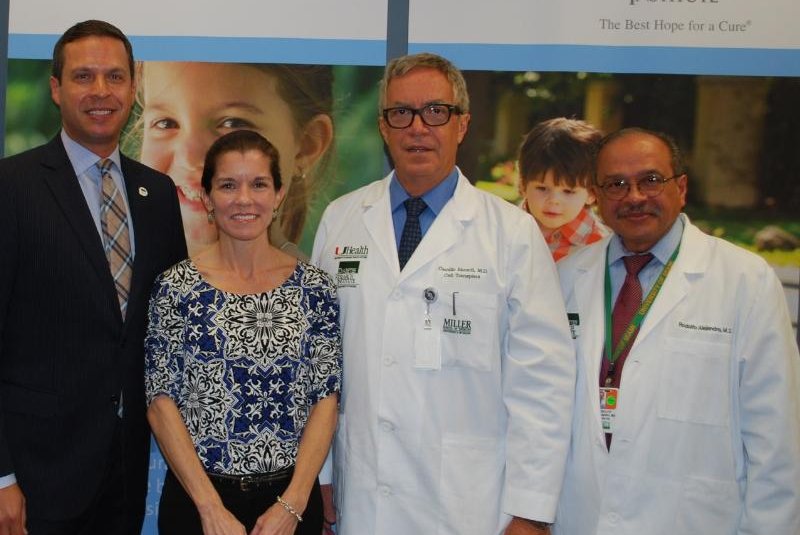First patient in diabetes trial no longer needs insulin therapy
A transplant of insulin-producing islet cells has the patient's body naturally creating the hormone responsible for managing glucose in the blood.
MIAMI, Sept. 10 (UPI) -- The first patient to receive therapeutic delivery of islet cells in a new diabetes study no longer needs insulin therapy to control type 1 diabetes, according to doctors at the University of Miami's Diabetes Research Institute.
The patient, Wendy Peacock, 43, has been giving herself insulin injections to control diabetes since she was diagnosed with the condition at age 17. Since she had the minimally-invasive procedure on August 18, Peacock has been off insulin, because her body is producing it naturally, and she no longer has the dietary restrictions that accompany type 1 diabetes.
Type 1 diabetes is caused by inadvertent destruction of insulin-producing islet cells in the pancreas by the immune system. While previous experimental treatments that involved the replacement of these cells has allowed patients to live without the need for insulin-replacement therapy for up to a decade, the goal is for better delivery of the cells to make the surgical treatment permanent -- effectively curing the condition.
"The technique has been designed to minimize the inflammatory reaction that is normally observed when islets are implanted in the liver or in other sites with immediate contact to the blood," said Dr. Camillo Ricordi, director of the DRI and a professor of biomedical engineering, microbiology, and immunology at the University of Miami, in a press release. "If these results can be confirmed, this can be the beginning of a new era in islet transplantation. Our ultimate goal is to include additional technologies to prevent the need for life-long anti-rejection therapy."
Infusing patients with islet cells as a treatment for diabetes is not a new idea, however researchers at UM said keeping these cells alive and functioning to moderate blood glucose levels has been difficult. These cells are generally injected into the liver, which is not the most conducive for the survival of the new cells, often rendering the treatment temporary and limiting its use to patients with severe cases of type 1 diabetes.
With Peacock, doctors used a new method of injection, by delivering the cells to the omentum, a tissue that covers the abdominal organs, with a biodegradable scaffolding. The scaffold is made by combining patient's blood with thrombin, a chemical used to control bleeding during surgery. The two substances form a gel-like material that sticks to the omentum and keeps the islets in place.
The gel is absorbed by the body over time, leaving the islet cells in place while new blood vessels form and send oxygen and nutrients to them so they can do their job. Anti-rejection therapy is currently used with patients, including Peacock, to help the body accept the cells over the long term
"She is like a nondiabetic person but requires antirejection drugs," Ricordi told the Miami Herald. "When you can do it without antisuppression, then it's a cure."
"As any type 1 knows, you live on a very structured schedule," Peacock said. "I do a mental checklist every day in my head -- glucose tabs, food, glucometer, etc. -- and then I stop and say, 'WOW! I don't have to plan that anymore.'"

